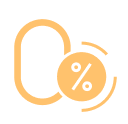
Our team applies its wide ranging in experience to determining.

Why Trade with Us
Swap free trading
Zero spread trading
Leverage upto 1:1000
Demo account
Trade in Top
| Symbol | Name | Price | Change | Change % | Volume |
|---|---|---|---|---|---|
| No data available | |||||
Learn About Metals Trading FAQs
- The metals market involves trading various metals, primarily precious metals like gold, silver, platinum, and palladium, as well as base metals such as copper, aluminum, and zinc.
- Spot Trading: Buying and selling metals for immediate delivery at current market prices
- Futures Trading: Contracts to buy or sell metals at a set price on a future date, allowing traders to speculate on price movements.
- Long-Term Investors: Buy metals as a hedge against inflation or economic uncertainty holding them for extended periods.
- Scalpers
- Day Traders: Engage in short-term trading, buying and selling metals within the same day to capitalize on small price movements.
- Swing Traders: Hold positions for several days or weeks, aiming to profit from medium-term price swings.
- Speculators: Take on higher risks by betting on price movements, often using leverage to amplify potential gains.
- Decide on Your Investment Amount
Start by choosing an investment amount you can comfortably allocate without financial strain. Many traders begin with smaller amounts to build confidence in the metals market. Effective investment management includes assessing your capital, setting position sizes based on stop-losses, using leverage cautiously, and maintaining a balanced risk-reward strategy to protect funds and maximize potential returns. - Set Your Risk Tolerance
Determine how much of your capital you’re willing to risk on each trade. A common rule of thumb is to risk 1-2% of your total account per trade—so for a $10,000 account, limit risk to $100-$200 per trade.
Calculate Position Size
To calculate a suitable position size based on your risk tolerance, use this formula:
Position Size = Amount Risked ÷ (Stop-Loss × Unit Value)
Example:
If risking $100 with a 5-point stop-loss and a unit value of $10 per point, your position size would be 2 units. - Learn Strategies and Market Analysis
Successful metals trading depends on understanding market analysis and strategies. Study technical and fundamental analysis to identify entry and exit points. Learn popular strategies such as trend following, mean reversion, or day trading, and choose approaches that align with your risk tolerance and insights into the metals market. - Test with Demo Accounts
Before trading with real money, practice on a demo account. Many brokers offer demo accounts that replicate live metals markets, allowing you to test strategies and get comfortable with the trading platform without risking actual funds. Treat demo trading seriously; it’s a valuable tool to learn and build confidence under real market conditions.
Comparison Table of All Account Types
| Premium | Zero Spread | Scalpers | |
|---|---|---|---|
| Spread Type | Variable | Variable | Variable |
| Contract Size | 1 lot = 100 000 units | 1 lot = 100 000 units | 1 lot = 100 000 units |
| Minimun Deposit | 100$ | 0$ | 20$ |
| Leverage | 1:1000 | 1:1000 | 1:1000 |
| Demo Account | - | - | ✔ |
| Max Trade/Lot Size | Unlimited | Unlimited | Unlimited |





